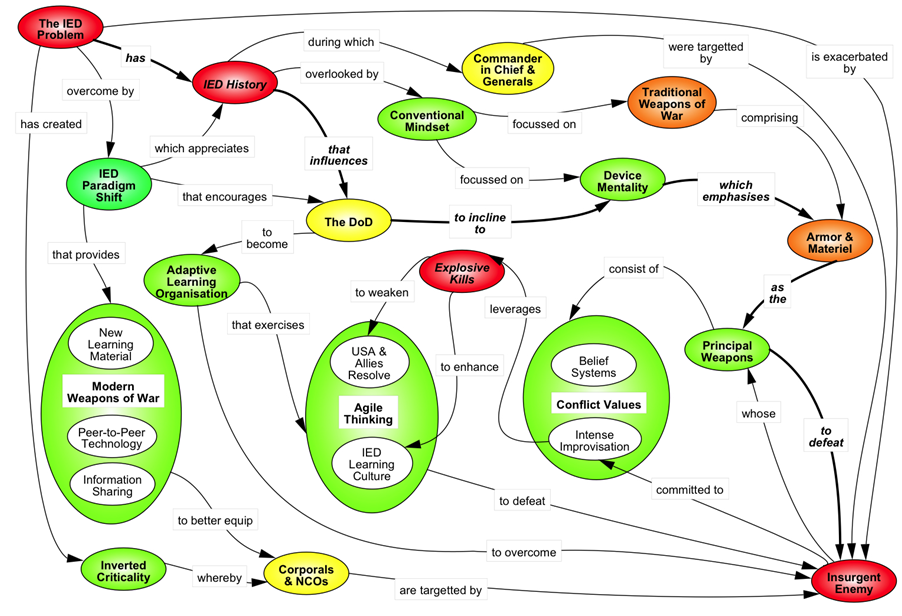

If the stock changes relative to this acceptable level, the flows change to push it back to the acceptable level. In balancing feedback loops, there is an acceptable setpoint of stock. Balancing Feedback Loops (Stabilizing)Īlso known as: negative feedback loops or self-regulation. Loops form when changes in a stock affect the flows of the stock. When a behavior is persistent like this, it’s likely governed by a feedback loop. In another case, the system seems to spiral out of control-it either rockets up exponentially, or it shrinks very quickly. In one type of case, the system seems self-correcting-stocks stay around a certain level. Systems often produce behaviors that are persistent over time.
Donella meadows thinking in systems diagream how to#
This is just one example of how we, as simplicity-seeking humans, tend to ignore the complexity of systems and thus develop incomplete understandings of how to intervene. It doesn’t often think as hard about how to reduce the outflow of people who quit or are fired.
Likewise, a company that wants to increase its headcount does so instinctively by hiring more people. We think less about how preventing death through better medical care also grows the population. When thinking about how the world population is growing, we naturally think about how increasing births must be driving the trend. Furthermore, we tend to focus more on inflows than on outflows. It takes time for the information to work its way through the system and to flow to the population.Īs humans, when we look at systems, we tend to focus more on stocks than on flows. If a population’s skills become meaningless because of technology, you can’t re-educate the workforce instantaneously. On the other hand, a slowly-changing stock means things can’t change overnight. If you get fired from your job, the inflow of money will stop, but you can take money from your stock to continue living and figure out how to solve the problem. Your bank account stores money and gives your life stability. They let inflows and outflows go out of balance for a period of time. They are shock absorbers to the system.įrom a human point of view, this has both benefits and drawbacks. Why do stocks change so gradually? Because it takes time for the flows to flow. It takes just a second to turn on the faucet. 
In a bathtub, think about how quick it is to change the inflow or outflow. The population grows with births and shrinks with deaths.
The world population is a stock of people. Mining lowers the stock, while natural processes increase the stock. In fossil fuels, the stock is the reservoir of fossil fuels. 
Many systems are analogous to the bathtub: This can be drawn on a stock-and-flow diagram, as here: The outflow is the drain that removes water from the tub.The inflow is water coming from the faucet into the tub.
 The stock is the amount of water in the tub. Inflows increase the level of stock, while outflows decrease the level of stock. It can be commonly thought of as an inventory, a store, or a backlog.įlows are the means by which the stocks change over time. Stocks and flows are the foundation of every system.Ī stock represents the elements in a system that you can see, count or measure. This corporation then takes place within the larger system of the economy. Within the system of a corporation, people, machines, and information work together to achieve the corporation’s goals. The larger team system also consists of coaches, support staff, and fans. A football team consists of a group of players on the field, each with a specific role that interacts with the others. Many things in the world operate as systems. To define it more cohesively, a system is a set of elements that is interconnected in a way that achieves its function. Purpose or Function: What the system achieves. Interconnections: The relationships between the elements. Elements: The individual things in the system. Understanding how systems work, and how to intervene in them, is key to producing the changes you seek. Many problems in the world manifest from defects in how the systems work. Many aspects of the world operate as complicated systems, rather than simple cause-effect relationships. Thinking in Systems is an introduction to systems analysis. 1-Page Summary 1-Page Book Summary of Thinking in Systems Fast Summary of Shortform's Guide to Thinking in Systems
The stock is the amount of water in the tub. Inflows increase the level of stock, while outflows decrease the level of stock. It can be commonly thought of as an inventory, a store, or a backlog.įlows are the means by which the stocks change over time. Stocks and flows are the foundation of every system.Ī stock represents the elements in a system that you can see, count or measure. This corporation then takes place within the larger system of the economy. Within the system of a corporation, people, machines, and information work together to achieve the corporation’s goals. The larger team system also consists of coaches, support staff, and fans. A football team consists of a group of players on the field, each with a specific role that interacts with the others. Many things in the world operate as systems. To define it more cohesively, a system is a set of elements that is interconnected in a way that achieves its function. Purpose or Function: What the system achieves. Interconnections: The relationships between the elements. Elements: The individual things in the system. Understanding how systems work, and how to intervene in them, is key to producing the changes you seek. Many problems in the world manifest from defects in how the systems work. Many aspects of the world operate as complicated systems, rather than simple cause-effect relationships. Thinking in Systems is an introduction to systems analysis. 1-Page Summary 1-Page Book Summary of Thinking in Systems Fast Summary of Shortform's Guide to Thinking in Systems








 0 kommentar(er)
0 kommentar(er)
